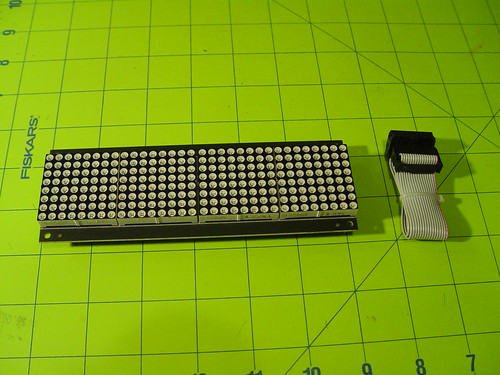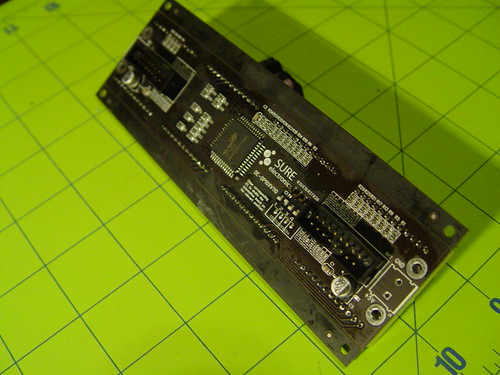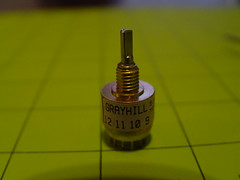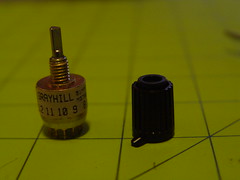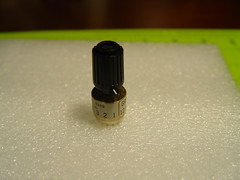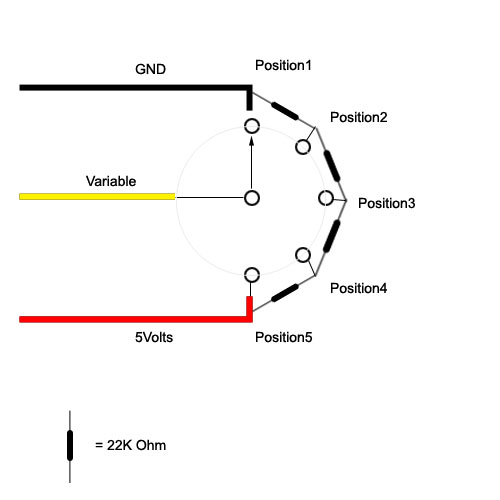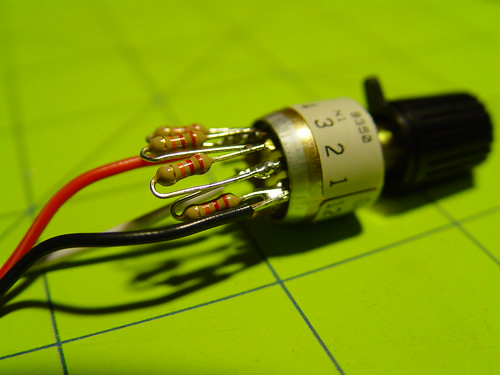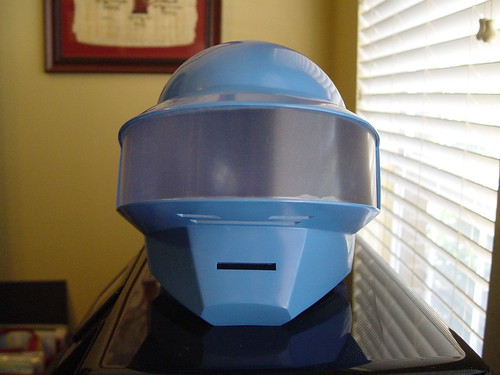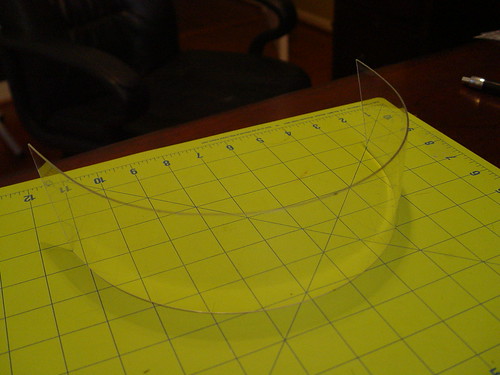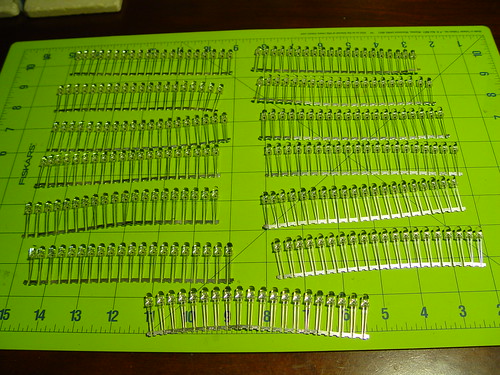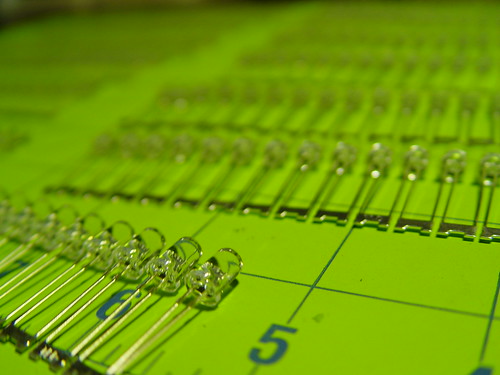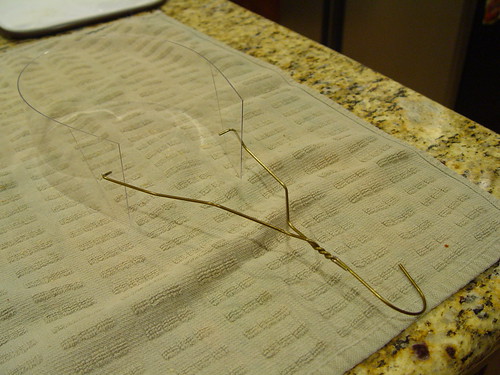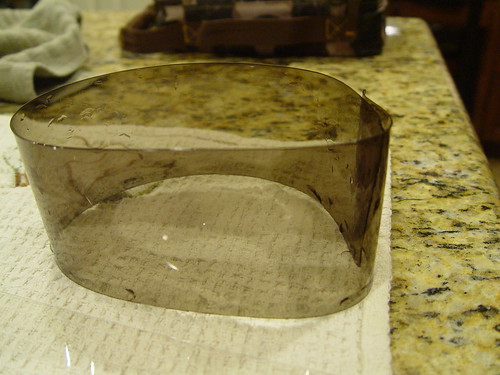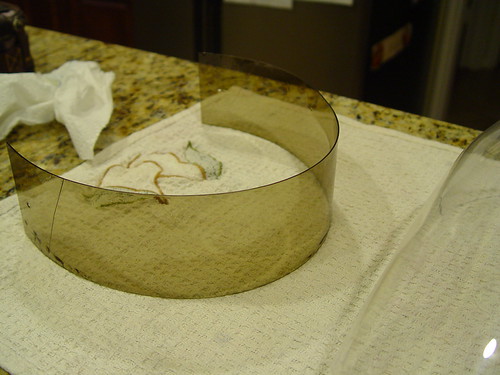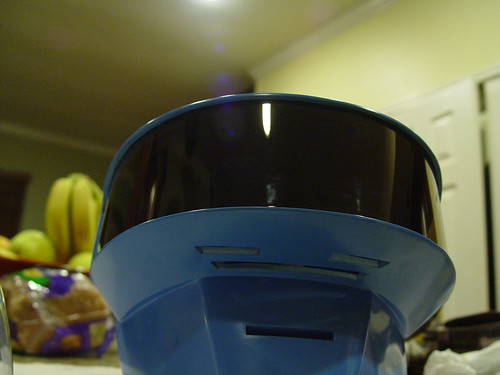tekparasite
Member
Since, I'm going with an 8x32 Matrix, I wanted to quickly visualize the footprint of the matrix relative to entire visor area based on a .1" spacing.
I grabbed an old prototype board. Placed 64 flat top 5mm LEDs and traced an 8x8 grid. It was quick and dirty - trust me. I then photocopied the traced area 3 times. Cut the squares and taped them next to each other. I then taped this strip onto the temp posterboard visor. Now, I can more less visualize what people may see of the matrix from different angles.
I'll probably do a more accurate one, but for now this 10min approach will suffice.
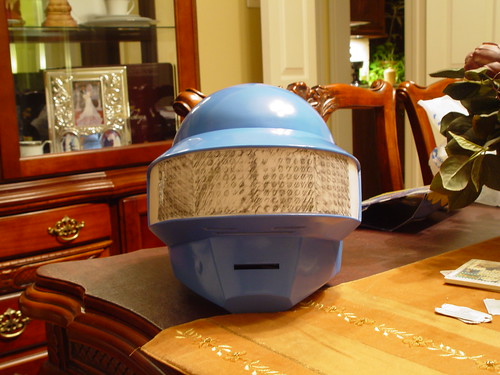

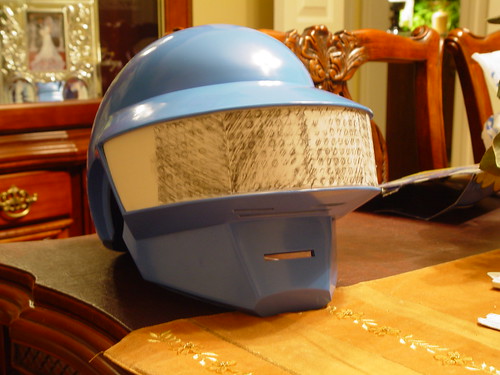
I grabbed an old prototype board. Placed 64 flat top 5mm LEDs and traced an 8x8 grid. It was quick and dirty - trust me. I then photocopied the traced area 3 times. Cut the squares and taped them next to each other. I then taped this strip onto the temp posterboard visor. Now, I can more less visualize what people may see of the matrix from different angles.
I'll probably do a more accurate one, but for now this 10min approach will suffice.




